What do Norse Vikings, Swedish farmers, an Italian peasant girl, & an English Bishop have in common? AND this year it’s also Friday the 13th ! - Well since today is the Feast of Santa Lucia you have a clue. The interesting story is in the who, the what & the why… Let’s start with the Norse Vikings. According to the old Julian calendar, 13 December was the shortest day & the longest night. In modern times with the shift into our Gregorian calendar, we think of this as being Winter Solstice, usually falling between 21-23 December; for those of us, like the Vikings, living in the Northern Hemisphere. This ‘darkest day’ was not a day to be out on a boat, better to be inside, possibly burning a log to keep warm - a tradition that would later become part of theYule-Tide Festival. But in those days, December 13 was the time of year when the ancient Pagan Scandinavian farmers offered up prayerful sacrifice to honor & procure healthy crops in the New Year. One renowned sacrifice involved building a ceremonial fire to light the longest night. The name Lucia comes from Lux which means light. An old legend from Sweden, names Lucia as: ‘The Bride of Light’. The story says that on 13 December, Lucia will appear riding in a lusse-cart, similar to a chariot, & if the cart breaks down, you will get lice in your hair. On Lucia night, the threshing of grain must be finished to insure a bountiful crop the next year; the horses should have on winter shoes; & all new-born babies should be baptized before Lucia night, or the trolls will come & whisk them away. Another old legend tells of Lucia being seen in the Swedish province of Vermland during a great famine. Lucia, robed in white came across the Lake in a large ship. She commanded the ship to dock at different places & distributed food to the starving people. The people who lived in Vermland claimed Lucia was the queen of supernatural beings & was a worker of miracles. To understand why we celebrate St. Lucia Day today, we need to look at the actual person. An English bishop from the Seventh Century, St. Aldhelm, gave us the story of St. Lucia as we know it today. Lucia’s mother suffered from an illness of unexplained bleeding, so Lucia persuaded her to go to the tomb of St. Agatha to pray. Miraculously, her mother was healed. After this, Lucia told her mother of her vow never to marry, & persuaded her that in gratitude to God they should give away their wealth to the poor of the city. So, by candlelight, the mother & daughter went about the city secretly ministering to the poor. Some even said she would bring food to the poor people living in caves, & that because she needed both hands to carry the food, she strapped candles to her head. As a result of her vow, the young man she had been engaged to was furious. Not only did he lose the opportunity of having the beautiful Lucia as his wife, he also missed out on the great amount of money that would have been her dowry which he would have received in the event of their marriage. At that time, it was illegal to be a Christian, so he went to the Governor & accused her of both being a Christian, & aiding other Christians. Lucia was called before a judge & given the chance to renounce her faith, but she refused. The judge ordered her to be taken away & executed, but the soldiers who came to drag her away could not budge her. So instead, they put wood around her, but the fire would not light. Finally, the judge called forth one of the soldiers & told him to kill her with his sword, which he did, but not before they tortured her & cut out her eyes because they shone with such beauty that all who looked at her felt love & mercy. Many years later, Sweden was in the grip of a terrible famine. At the height of that dark, icy winter, hunger & suffering were at their worst. People were reduced to grinding tree bark to bake into bitter bread. But on the long night of Santa Lucia Day a brilliantly lit ship came sailing across the stormy waters of Lake Vannern. At the helm stood a beautiful young woman dressed all in white, with a face so radiant that there was a glow of light all about her head. As the vessel touched shore, great quantities of food & clothing appeared with her for the starving. When asked her name, she simply replied “Lucia”. When all were fed & cared for, the vessel disappeared as quickly as it had come. To this day, the people of Sweden celebrate the remembrance of Lucia, & how she came to save the people of their country. In the pedagogy of the Waldorf schools, the 2nd grade studies the Saints, so they take up this Festival. The youngest in the class wears the candle crown & the class processes thru the hallways singing:
Falling within the Advent season, Saint Lucy’s Day is viewed as an event signaling the arrival of Christmas-tide, pointing to the birth of the Light on Christmas Day. It is said that to vividly celebrate Saint Lucy’s Day will help one live the long winter days with enough light. St. Lucy is also the patron saint of the city of Syracuse (Sicily). On 13 December a silver statue of St. Lucy containing her relics is paraded through the streets before returning to the Cathedral. Here, it is traditional to eat whole grains instead of bread on 13 December. This usually takes the form of cuccia, a dish of boiled wheat berries often mixed with ricotta & honey, or sometimes served as a savory soup with beans. St. Lucy is also popular in some regions of North-Eastern Italy, where she is said to bring gifts to good children & coal to bad ones the night between 12 & 13 December. According to tradition, she arrives in the company of a donkey & her escort, Castaldo. Children are asked to leave some coffee for Lucia, a carrot for the donkey or goat, & a glass of wine for Castaldo. They must not watch Santa Lucia delivering these gifts, or she will throw ashes in their eyes, temporarily blinding them. In Hungary & Croatia, a popular tradition on Saint Lucy’s Day involves planting wheat grains that will eventually be several centimeters high on Christmas; this new wheat serves as symbolic of the new life born in Bethlehem, the Nativity, & a candle is sometimes placed near the new plant “as a symbol of the Light of Christ”. In Denmark, the Day of Lucy (Luciadag) was celebrated on 13 December 1944, as an attempt “to bring light in a time of darkness, a passive protest against German occupation during the Second World War, but it has been a tradition ever since. Historically Norwegians considered what they called Lussinatten the longest night of the year & no work was to be done. Between Lussi Night & Yule, trolls & evil spirits, in some accounts also the spirits of the dead, were thought to be active outside. It was believed to be particularly dangerous to be out during Lussi Night. According to tradition, children who had done mischief had to take special care, since Lussi could come down through the chimney & take them away, & certain tasks of work in the preparation for Yule had to be finished, or else the Lussi would come to punish the household. The tradition of Lussevaka – to stay awake through the Lussinatt to guard oneself & the household against evil, has found a modern form through throwing parties until daybreak. Another company of spirits was said to come riding through the night around Yule itself, journeying through the air, over land & water. This might be an echo of the myth of the Wild Hunt, called Oskoreia in Scandinavia, found across Northern, Western & Central Europe. Legend also has it that farm animals talked to each other on Lussinatten, & that they were given additional feed on this longest night of the year. In Saint Lucia, a tiny island in the Caribbean named after its patron saint, St. Lucy, 13 December is celebrated as a National Day. The National Festival of Lights & Renewal is held the night before the holiday. In this celebration, decorative lights (mostly bearing a Christmas theme) are lit in the capital city of Castries; artisans present decorated lanterns for competition; & the official activities end with a fireworks display. In the past, a jour ouvert celebration has continued into the sunrise of 13 December. Dante also mentions Lucia in Inferno Canto II as the messenger “of all cruelty from the foe” sent to Beatrice from “The blessed Dame” (Divine Mercy), to rouse Beatrice to send Virgil to Dante’s aid. She has instructed Virgil to guide Dante through Hell & Purgatory. The emblem of eyes on a cup or plate recalls her torture & suffering & reflects popular devotion to her as protector of the light which brings sight. In paintings St. Lucy is frequently shown in Gothic art holding her eyes on a golden plate. She also holds the palm branch, symbol of victory over evil. Born of darkness comes the sacred light. What would it be like to use this Feast Day as an opportunity to ‘see’ the growing darkness with eyes of hope, knowing that in the dark womb, the light will grow & be reborn, again & yet again. ~hag Recording of the 1st Week of Advent2nd Week of Advent: Recording13 December 2024 “Speaking with the Stars” Friday the 13th What is at the root of “triskadekaphobia” (the fear of the number 13)? Well it could be because all numbers have their own cosmic vibration, & “13” is considered an unstable number. From the time when humans first used numbers to measure things, the number 12 has represented a common cosmic standard. There are 12 months of the year, 12 hours on the clock, 12 signs of the Zodiac, 12 Tribes of Israel, 12 Apostles, 12 Knights of the Round Table & so on. The number 13 represents disruption or a profound metamorphosis to the established order. The modern basis for the aura that surrounds Friday the 13th stems from Friday October the 13th, 1307. On this date, the Pope of the church in Rome, in Conjunction with the King of France, carried out a secret death warrant against “the Knights Templar”. The Templars were terminated as heretics, never again to hold the power & riches that they had stewarded for so long. Their Grand Master, Jacques DeMolay, was arrested & tortured on that Friday the 13th. But In pre-Christian societies, reliance on a lunar calendar meant that Friday the 13th would coincide with the Full or New Moon. And Friday is the day to honor the goddesses & planet Venus. Friday the 13th symbolized a day for everyone to let go, celebrate & sacrifice routine. Such breaks in the usual order allowed for the restoration of balance & harmony. The Scandinavian belief that the number 13 signified bad luck sprang from their mythological 12 demigods, who were joined by a 13th demigod, Loki, a cruel trickster who brought upon humans great misfortune. We can see the 12 apostles as represenatives of the 12 signs of the zodiac, with The Christ as the 13th – the Cosmic Being of love radiating out to them as the Sun. And that gets shifted at the Last Supper, when Judas becomes the traitor. In Imitatio Christi, we see this circle of 13 again in the initiation of Christian Rosenkreutz. Whether or not a person considers Friday the 13th as unlucky, the psychology of human nature tells us that belief in superstitions can seem to offer a sense of control in stressful situations. Let’s remember dear friends – Today’s beliefs may very well be tomorrows superstitions. How can think for ourselves? If we look we can always find the Good. Take a cue from our forebears. They saw the number 13 as a lucky omen, a time to make a fresh beginning, seeking new roads to success & satisfaction, as we open our heart & mind to new opportunities, luck & love!But just for fun, don’t step on a crack! 😉 ~hag ON THIS DAY IN HISTORY 662- Feast day of Saint Odilia, patron saint of good eyesight, & of Alsace. Some say there is a connection with her & a local well at the Hermitage near the Dornach Hill… By tradition she was born blind. Her father did not want her because she was a girl & handicapped, so her mother had her brought to Palma where she was raised by peasants there. A tenth-century legend relates that when she was twelve, Odile was taken into a nearby monastery. While there, the bishop Saint Erhard of Regensburg was led, by an angel, to Palma where he baptized her Odile (Sol Dei), whereupon she miraculously recovered her sight. Her younger brother Hughes had her brought home again, which enraged her father so much that he accidentally killed his son. Odile miraculously revived him, & left home again. She fled across the Rhine to a cave near Freiburg Germany. It is said the cliff face opened up in order to rescue her from her plight. In the cave, she hid from her father. When he tried to follow her, he was injured by falling rocks & gave up. When her father fell ill, Odile returned to nurse him. He finally gave up resisting his headstrong daughter & founded the Augustine monastic community of Mont Ste. Odile in the Hochwald, Bas-Rhin, where Odile became abbess. Some years later Odile was shown the site of Niedermünster at the foot of the mountain by St. John the Baptist in a vision. There she founded a second monastery, including a hospital. The local well is still said to cure eye diseases. St. Odile died in 720 at the convent of Niedermünster. At the insistent prayers of her sisters she was returned to life, but after describing the beauties of the afterlife to them, she took communion by herself & died again. 1204 – Deathday of Maimonides, a medieval Sephardic Jewish philosopher who became one of the most prolific & influential Torah scholars of the Middle Ages. In his time, he was also a preeminent astronomer and physician. Born in Cordova, (present-day Spain) on Passover Eve he worked as a rabbi, physician, & philosopher in Morocco & Egypt. During his lifetime, most Jews greeted Maimonides’ writings on Jewish law & ethics with acclaim & gratitude, even as far away as Iraq & Yemen, his copious work comprises a cornerstone of Jewish scholarship. He is sometimes known as “ha Nesher ha Gadol” (the great eagle) in recognition of his outstanding status as a bona fide exponent of the Oral Torah. Aside from being revered by Jewish historians, Maimonides also figures very prominently in the history of Islamic & Arab sciences. Influenced by Al-Farabi, Avicenna, & his contemporary Averroes .He in his turn influenced other prominent Arab & Muslim philosophers and scientists. He became a prominent philosopher & polymath in both the Jewish & Islamic worlds. Maimonides exerted an important influence on the Scholastic philosophers, especially on Albert the Great, Thomas Aquinas & Duns Scotus. He was a Jewish Scholastic. Educated by reading the works of Arab Muslim philosophers , he acquired an intimate acquaintance not only with Arab Muslim philosophy, but with the doctrines of Aristotle. Maimonides strove to reconcile Aristotelian philosophy & science with the teachings of the Torah. 1466 – Deathday of Donatello, Italian painter & sculptor 1476 – Birthday of St. Lucy Brocadelli, mystic & stigmatic. Lucy was born in 1476 on the Feast Day’s of St. Lucia & Saint Odilia, the eldest of eleven children in the town of Narni (then called Narnia go figure) in the region of Umbria. When she was only five years old, she had a vision of the Virgin Mary. Two years later, she had another vision, this time of the Virgin Mary accompanied by Saint Dominic. Dominic is said to have given her his scapular at this time. When she was twelve years old, Lucy made a private vow of chastity, & she determined to become a Dominican nun. Circumstances, however, changed to make doing so impossible as her father died the following year, leaving her in the care of an uncle. This uncle, following the wish of her father while he was still alive, decided that the best course of action he could take would be to get Lucy married as quickly as possible. (O this old story…grrr) He made several attempts to do so. One of these included holding a large family party. He had invited the man he had chosen to become Lucy’s husband to the party, with the intention of having the couple publicly betrothed. He however had not informed Lucy of his intentions. The suitor made an attempt to put a ring on Lucy’s finger, only to be slapped repeatedly by her for his efforts. A later attempt involved Count Pietro di Alessio of Milan, an acquaintance of the family. Lucy was actually quite fond of him, but felt that her earlier vow of perpetual virginity made the marriage impossible. The strain Lucy felt as a result of the conflicting feelings made her seriously ill. During this time, the Virgin Mary & Saint Dominic again appeared to her, this time accompanied by St. Catherine of Siena. They reportedly advised Lucy to contract a legal marriage to Pietro, but to explain that her vow of virginity would have to be respected & not violated. Pietro agreed to the terms, & the marriage was formalized. Lucy performed austere penances, which included regularly wearing a hair shirt under her garments & spending most of the night in prayer as well as helping the poor. The servants told her husband that Lucy was often visited in the evenings by Saint Catherine, Saint Agnes, & Saint Agnes of Montepulciano, who helped her make bread for the poor. However, when one of the servants came up to him one day & told him that Lucy was privately entertaining a handsome young man she appeared to be quite familiar with. He took up his sword & went to see who this person was. When he arrived, he found Lucy contemplating a large crucifix. The servant told him that the man he had seen Lucy with looked like the figure on the crucifix. Later Lucy left one night for a local Franciscan friary, only to find it closed. She returned home the following morning, stating that she had been led back by two saints. That was enough for Pietro. He had her locked away for the bulk of one Lenten season. She was visited only by servants who brought her food. When Easter arrived, however, she managed to escape from Pietro back to her mother’s house &, on 8 May 1494, became a Dominican tertiary. Pietro expressed his disapproval of this in a rather dramatic form—by burning down the monastery of the prior who had given her the habit of the Order. In 1495 Lucy went to Rome & joined a group of Dominican tertiaries who were living in community. The next year she was sent to Viterbo to establish a new convent & here she found she was frequently the object of unwanted attention, as she was reported to have received the stigmata. Lucy did her best to hide these marks, & was frequently in spiritual ecstasy. The house had a steady stream of visitors who came to speak to Lucy, &, often, just to stare at her. Even the other Sisters were concerned about her, & at one point called in the local bishop who watched Lucy go through the drama of the Passion for twelve hours straight. The bishop would not make a decision on Lucy, & called in the local Inquisition. At that time Pietro also came to her, making a final plea to persuade Lucia to return with him as his wife. She declined, & Pietro left alone. He would himself later become a Franciscan friar & a famous preacher. When Lucy returned to the convent in Viterbo, she found that the Duke of Ferrara, Ercole d’Este I, had determined to build a convent in Ferrara, & he wanted her to be its prioress. Lucy, the Dominican Order, & the pope all agreed quickly to the new proposal. Lucy’s departure precipitated a conflict between Ferrara & Viterbo which would continue for two years. Viterbo wanted to keep the famous mystic for themselves, & the Duke wanted her in Ferrara. Lucy escaped secretly from Viterbo & was officially received in Ferrara on May 7, 1499. Thirteen young girls immediately applied for admission to her new community. The local Prior Provincial of the Dominican Order would not permit any member of the Order to see her. There are records that at least one Dominican, Catherine of Racconigi, did visit her, evidently by bilocation, & that Lucy’s earlier visitations by departed saints continued. This punishment was to last her entire life. When she died her body was laid out for burial & so many people wanted to pay their last respects that her funeral had to be delayed by three days. Her tomb in the convent church was opened four years later & her perfectly preserved body was transferred to a glass case. When the French Revolutionary Army suppressed the convent in 1797, her body was transferred to the Cathedral of Ferrara, & then in 1935 to the former Cathedral of Narnia. Lucy was beatified on 1 March 1710. 1938 – The Holocaust: The Neuengamme concentration camp opens in the Bergedorf district of Hamburg, Germany 1988 – PLO Chairman Yasser Arafat gives a speech at a UN General Assembly meeting in Geneva, Switzerland, after United States authorities refused to grant him a visa to visit UN headquarters in New York. Arafat engaged in a series of negotiations with the government of Israel to end the decades-long conflict between it & the PLO. These included the Madrid Conference of 1991, the 1993 Oslo Accords & the 2000 Camp David Summit. His political rivals, including Islamists & several PLO leftists, often denounced him for being corrupt or too submissive in his concessions to the Israeli government. In 1994 Arafat received the Nobel Peace Prize, together with Yitzhak Rabin & Shimon Peres, for the negotiations at Oslo. During this time, Hamas & other militant organizations rose to power & shook the foundations of the authority that Fatah under Arafat had established in the Palestinian territories. In late 2004, after effectively being confined within his Ramallah compound for over two years by the Israeli army, Arafat became ill, fell into a coma & died on 11 November 2004 at the age of 75, the cause of Arafat’s death has remained the subject of speculation. Arafat remains a controversial figure. The majority of the Palestinian people view him as a heroic freedom fighter & martyr who symbolized the national aspirations of his people, while most Americans & Israelis came to regard him as an unrepentant terrorist. my POD (Poem Of the Day) ~my listening tongue - my screaming ear - the triple eye - speaks... ~hag The Shepherds Play Thurday 19 December 6:30 pm @ The Christian Community 2135 W Wilson Ave, Chicago IL. In the late 1850s, the Austrian linguist Karl Julius Schröer collected and published a cycle of Medieval mystery plays that had been preserved by residents of the village of Oberufer, near Bratislava. We continue this ancient tradition, which depicts the birth of Jesus in a stable, where he is sought out by a group of simple shepherds. Donations Welcome! Winter Solstice w/ Mysteria Mystica Americana MA Saturday 21 December - 1 pm – 2 pm CST Join Zoom Meeting https://us06web.zoom.us/j/7050174041?pwd=IHmFS9yuzUXffIXg5b4OojEMtLzbFA.1&omn=84580651527 Meeting ID: 705 017 4041 - Passcode: MA A Special gift from the Grand Lodge of Mysteria Mystica Americana: Richard Cloud, Hazel Archer, Lisa Dalton w/ guests: Michael Draskovic, Russell Blackstone MA will be observing the ‘Silence of the Elders’ during the 2024-25 Holy NightsThe Fellowship of Preparation Makers' annual gathering, to be held this year in Viroqua, WI. Registration and further info will be posted on their page as it becomes available: https://www.biodynamics.com/content/fellowship-preparation-makers . If you want to support the Spiritualization of the Earth thru the Biodynamic Farming done on Zinniker Farm, you are invited to become a paid subscriber, with all donations going directly to the farm Greetings Friend, you currently a free subscriber to Cognitive Ritual. Thank you for receiving my workings freely offered. For the full experience, upgrade your subscription. ALL donations go to support Zinniker Farm - The oldest Biodynamic Farm in America! Together we can spiritualize the Universe. XOX ~hag |
Friday, 13 December 2024
Bride of Light
Subscribe to:
Post Comments (Atom)
Plan to Win! Fresh Manna by Pastor Tim Burt
Fresh Manna with Pastor Tim Burt A Note from Pastor Tim Tim here. I'm so glad you...

-
Fresh Manna with Pastor Tim Burt A Note from Pastor Tim Tim here. I'm so glad you...







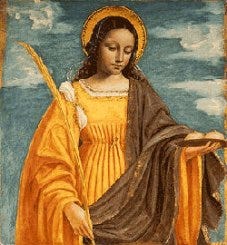








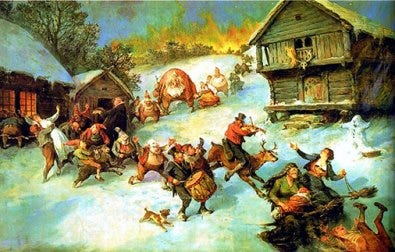









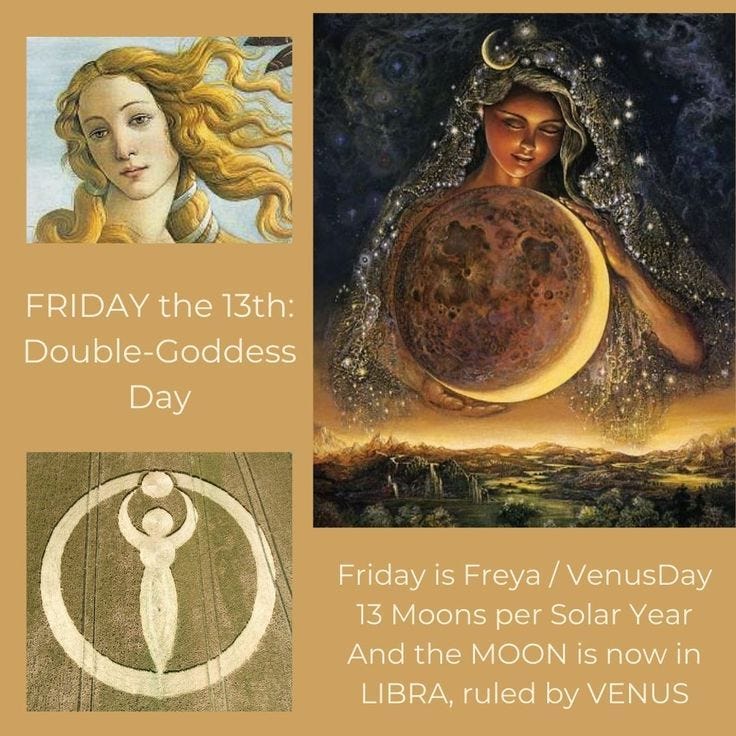








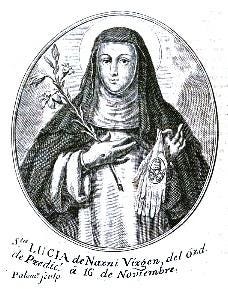






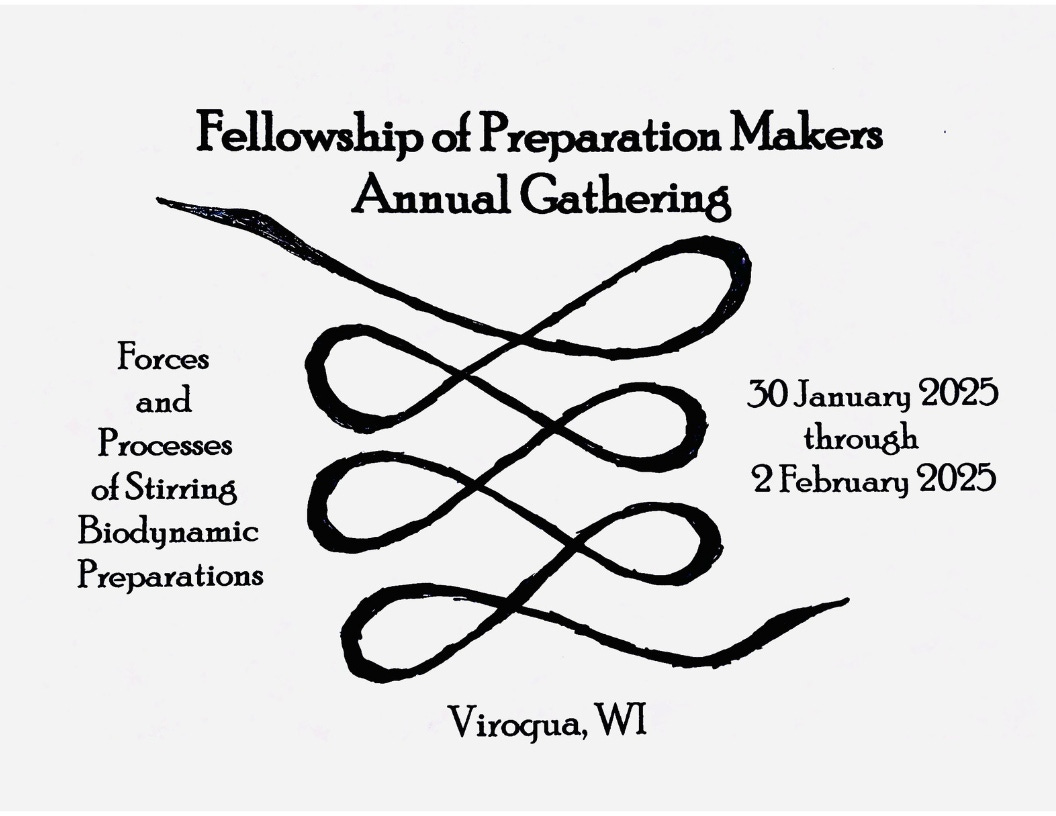


No comments:
Post a Comment